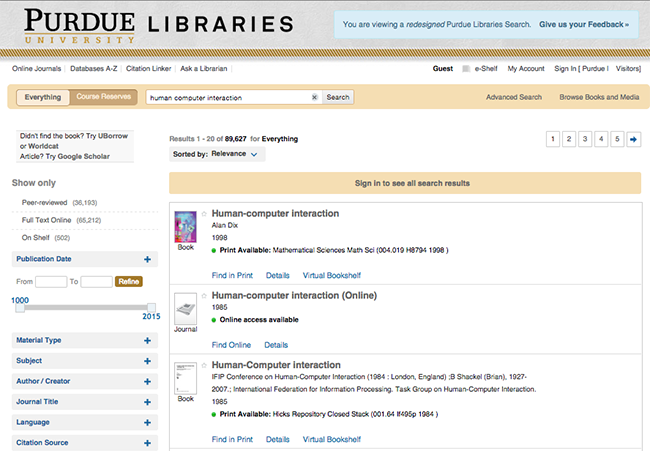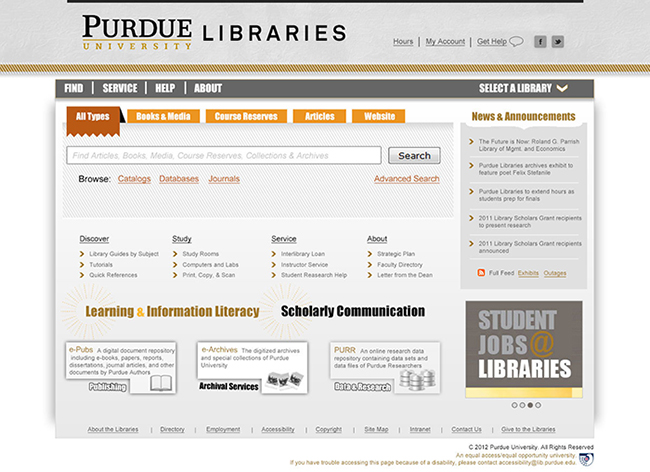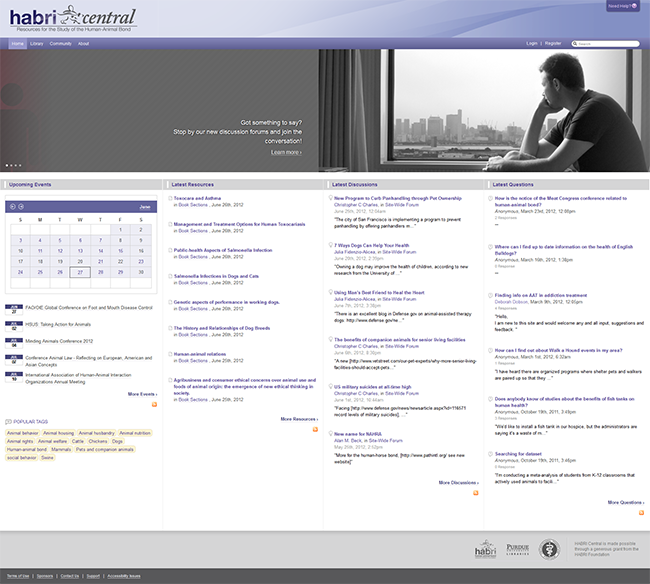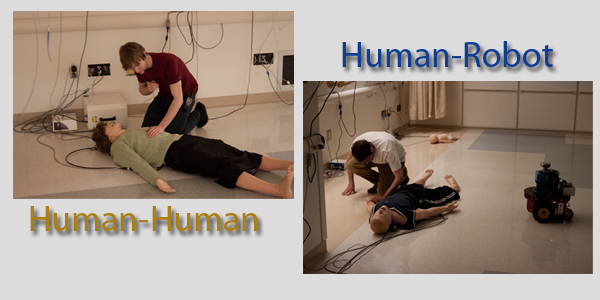
Data Management Planning (DMP) Tool helps researchers create, review, and share data management plans that meet institutional and funder requirements.
Read More

This study presents the application of hierarchical task analysis as an expert-based and workflow centered method to evaluating discovery tools for library resources. We used Nielsen’s Goal Composition theory as an analytical framework to evaluate users' interaction with a discovery tool from two perspectives: a) users’ physical interactions (i.e., clicks), and b) user’s cognitive steps (i.e., decision points for what to do next).
Read More

The previous Purdue University Libraries website was designed several years ago. It was based on static HTML pages and there were usability issues due to inconsistency and outdated content. A redesign was needed to introduce a content management system and establish a consistent content strategy. I worked as a user experience researcher/designer to lead the redesign effort. I applied a typical user-centered design process for this project, starting from user research, persona creation, prototyping, implementation, to iterative user testing.
Read More

This project was an empirical usability evaluation of HABRI (Human-Animal Bond Research Initiative) Central webiste, an open access research repository and collaboration platform for human-animal bond researchers. HABRI Central hosts previously published materials from related disciplines and an extensive bibliography, in addition to traditional hub materials such as tools and datasets. Results of the evaluation showed that the overall user experience of HABRI Central was satisfactory, but also indicated a number of usability issues.
Read More

Human-Robot peer-based teams are evolving from a far-off possibility into a reality. Human Performance Moderator Functions (HPMFs) can be used to predict human behavior by incorporating the effects of internal and external influences such as fatigue and workload. This research focuses on determining the applicability of workload HPMFs in team tasks for first response mass casualty triage incidents between a Human-Human and a Human-Robot team.
Read More





